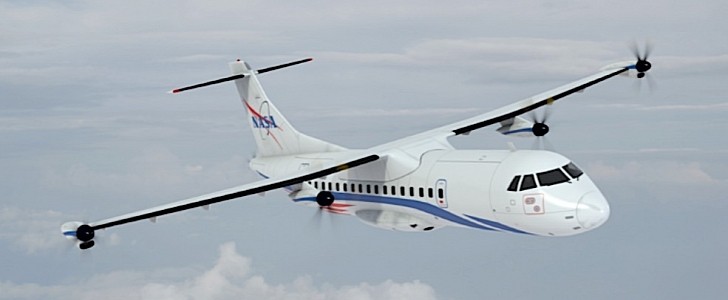As it becomes increasingly clear that internal combustion engines are not sustainable given the finite resources of our planet, the electrification of propulsion systems is slowly expanding from the auto industry to include other fields as well, including aviation. Several major players in this segment are currently working on some type of electric powerplants for aircraft, including a space agency: NASA.
The organization has in place something called Electric Powertrain Flight Demonstration. EPFD for short, it is a program meant to give birth to Electrified Aircraft Propulsion (EAP) technologies needed for commercial aircraft.
On the last day of September, NASA announced it had awarded contracts for the research of EAP to two companies, namely GE Aviation and MagniX USA. The contracts are worth $179 million and $74.3 million, respectively.
Each of the two companies now has five years at its disposal to “conduct ground and flight test demonstrations of their EAP technologies applicable to commercial aircraft transports.” NASA will help with development, flight test instrumentation, and data analysis.
Despite the efforts being made to make these technologies a reality, the world does not yet have a functional electric passenger commercial aircraft. The latest development in the larger field of electrified aviation is the Rolls-Royce.
In mid-September, the company flew for the first time the Spirit, an electric single seater meant to set the speed record for this kind of machine. The airplane uses a battery with 6,000 cells, “the most power-dense battery pack ever assembled for an aircraft,” and it should be capable of flying at speeds of 300 mph (483 kph). The date for the record-setting flight has not yet been set.
Separately, Rolls-Royce is also working with an undisclosed Scandinavian airline for the development of “an all-electric passenger aircraft for the commuter market.” This one should be able to enter service in 2026.
On the last day of September, NASA announced it had awarded contracts for the research of EAP to two companies, namely GE Aviation and MagniX USA. The contracts are worth $179 million and $74.3 million, respectively.
Each of the two companies now has five years at its disposal to “conduct ground and flight test demonstrations of their EAP technologies applicable to commercial aircraft transports.” NASA will help with development, flight test instrumentation, and data analysis.
Despite the efforts being made to make these technologies a reality, the world does not yet have a functional electric passenger commercial aircraft. The latest development in the larger field of electrified aviation is the Rolls-Royce.
In mid-September, the company flew for the first time the Spirit, an electric single seater meant to set the speed record for this kind of machine. The airplane uses a battery with 6,000 cells, “the most power-dense battery pack ever assembled for an aircraft,” and it should be capable of flying at speeds of 300 mph (483 kph). The date for the record-setting flight has not yet been set.
Separately, Rolls-Royce is also working with an undisclosed Scandinavian airline for the development of “an all-electric passenger aircraft for the commuter market.” This one should be able to enter service in 2026.




















